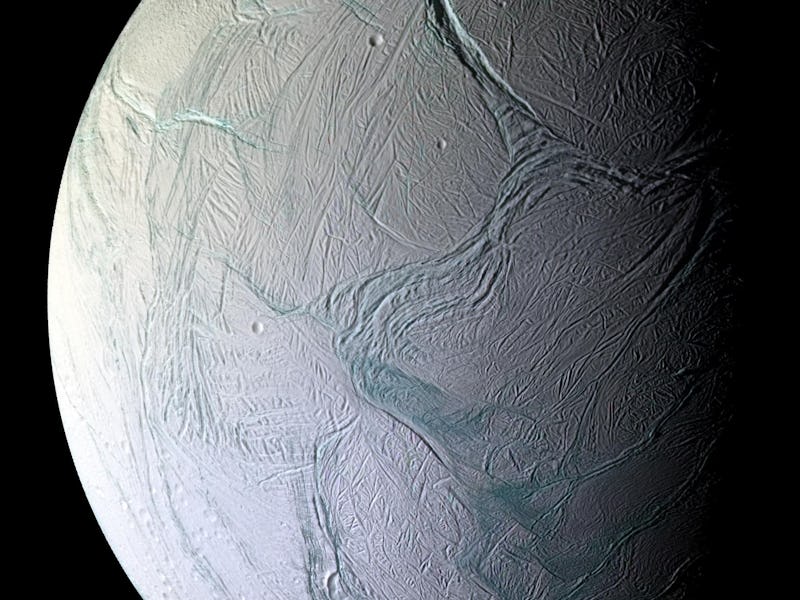New study improves the chances of habitability in the outer Solar System
New study improves the chances of distant objects being habitable.

Solar System moons such as Enceladus and Europa may be the poster child for icy world habitability, but a new study just increased the chances for even more freezing objects of harboring life.
Large icy moons are known to be geologically active with the help of chemical interactions between water and rock. But it was previously believed that most of these needed to be close to their planet to stay warm enough to hold liquid water oceans.
However, a recent experiment revealed that these types of chemical interactions can still take place in frozen objects of the Solar System thanks to the presence of salts and ammonia.
The findings are detailed in a study published Thursday in the journal Nature Astronomy.
HERE’S THE BACKGROUND— Jupiter’s moon Europa has a relatively smooth surface like the Earth, save for a few cracks caused by its host planet’s gravitational tides. The smallest of Jupiter’s four Galilean moons, Europa also has plumes of water vapor, an icy surface, and a possible ocean that may lay beneath.
When NASA’s Cassini spacecraft swung past Saturn’s moon Enceladus at an altitude of 725 miles, it revealed an unexpected world with a subsurface ocean and plumes of water ice and vapor erupting from the moon’s south polar region — similar activity to that of Europa, while only being about 16 percent the size.
A closeup image of Enceladus captured by the Cassini spacecraft on August 11, 2008.
This closer look at Enceladus made it one of the most potentially habitable worlds of the Solar System, and forced scientists to investigate other icy objects that were deemed uninhabitable before.
Both of these celestial objects are the most active icy worlds, with their geological activity being a result of water interacting with rock. The interaction results in changing the mineral composition of the rock.
It was previously assumed that this type of activity cannot take place on icy objects with temperatures that dip below -20 Celsius since most of the water would be frozen.
WHAT’S NEW— The scientists behind the new study wanted to test out the temperature lower limits previously hypothesized. They conducted an experiment by dissolving olivine, a rock-forming mineral group, in an alkaline solution, a mix of chemical compounds dissolved in water at temperatures that ranged from −20, 4, and 22 degrees Celsius.
The experiment ran for 442 days, during which the team observed how much the chemicals were dissolving in the solution.
They found that the same process of geologically active bodies such as Enceladus and Europa can still occur in sub-zero temperatures due to the presence of salts and ammonia in icy worlds. This suggests that some of Saturn’s more distant moons, Uranus’ large moons, and several icy dwarf planets that lie beyond the orbit of Neptune can still be geologically active, thereby increasing their chances of habitability.
WHAT’S NEXT — The recent findings open up a new group of icy objects that may just have the right conditions for potential habitability.
Further observations are needed to confirm the activity of these objects, and thankfully two recently launched missions may be able to do just that.
The much anticipated James Webb Space Telescope will get a closer look at distant bodies, including the icy moons of the Solar System, and faraway objects of the Kuiper Belt.